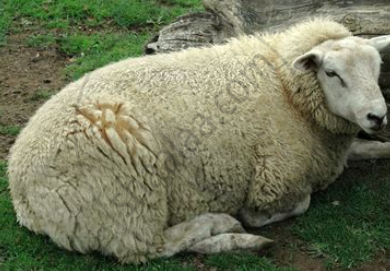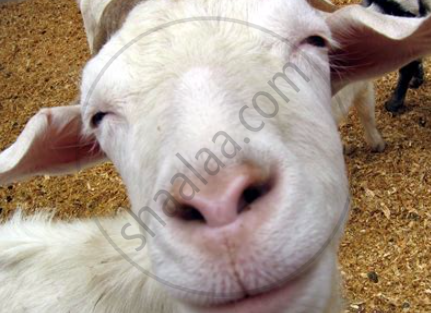1. Sheep (Ovis Aries)
Today, sheep are raised in all parts of the world. They are reached for wool and mutton, mostly in hilly tracts. Sheep graze on grass and herbs. High-quality soft wool shahtoosh is obtained from the animal chiru. (Tibetan antelope, pantholops nosgson)

Breeding of sheep:
- To improve the quality of a sheep, cross-breeding experiments are usually done.
- For this purpose, a good-quality wool-yielding or mutton-producing sheep is chosen and crossbred with an exotic breed like Dorset, Horn, and Merino.
- Deccani and Nellore breeds are raised only for mutton.
- Patanwandi provides wool for army hosiery.
2. Goat (Capra Capra)
It is also called poor man's cows because it yields a small quantity of milk and feeds on a variety of wild plants, even prickly ones. About 19% of the world's goat population occurs in India. Open barns are used to raise goats.
- The wild goats of Baluchistan and Sindh are the ancestors of all domesticated goat breeds.
- A bully goat or a buck is the name given to an adult male goat, whereas a nanny goat or a doe is the name given to an adult female goat.

- Goats are less susceptible to major illnesses. They have anthrax, goat pox, pleuropneumonia, and foot and mouth disease, among other contagious ailments.
- The symptoms of sickness are similar to those seen in cows. Goats are prone to parasitic infestation.
- The fine, soft wool called "Pashmina" is the underfur of Kashmir and Tibet goats.
3. Horses
The horses (Equus cabalus) are non-ruminant, solid-hoofed quadrupeds with a long, pendant mane and tail that are covered in long hair. Horses have a low reproduction rate when compared to other animals. For a long time, controlled natural mating of horses has been practiced in India. Racehorse raising, training, and medical care necessitate a high level of professional ability.





